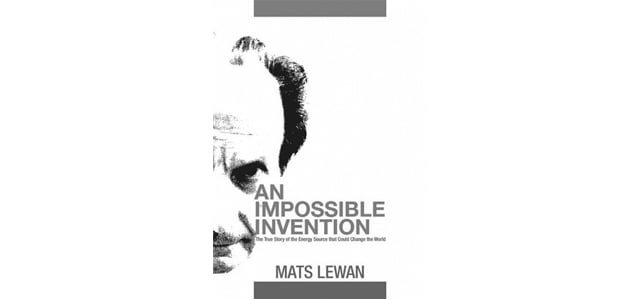Nobel laureate Dr. Brian Josephson commented on Nature with a review of Mats Lewan‘s new book An Impossible Invention, chronicling the early work of Andrea Rossi, engineer and inventor of the Energy Catalyzer, or Ecat. The Ecat is a commercial steam generator based on nickel-hydrogen exothermic reactions that is now in development. Lewan had a front row seat for several of the public and private demonstrations that Rossi performed since January 2011, and has interviewed Rossi extensively on his work.
We reproduce what Josephson wrote here:
The highlight of the week was the publication of Mats Lewan’s book ‘An Impossible Invention’, subtitled The true story of the energy source that could change the world. The author, a science and technology writer, has been investigating the controversial Rossi reactor or E-cat in depth in the 3 years since its initial presentation in Bologna in January 2011.
The first part of the book covers Andrea Rossi’s previous inventions, showing how life is not easy for an inventor whose inventions pose a threat to other enterprises. This is followed by what Lewan has been able to glean about the invention since the initial demonstration, purportedly of a fusion device creating some kW of heat.
Besides following the course of developments in detail, Lewan gives much attention to the question of whether the device is genuine, or whether fraud is involved. One important event was a long-period investigation, published at arXiv:1305.3913, providing strong evidence of the production of anomalous heat. Particularly interesting to me, in the light of my past dealings with arxiv, was the text of an accidentally leaked exchange between two moderators, wondering if they could find a rationale for blocking that report.
In the course of his attempts to bring his device to a commercial conclusion, Rossi had problems with collaborators, being suspicious of their motives, but it seems he has found an (undisclosed) American firm that he trusts, who have been licensed to develop the device. This fascinating book provides the answers to many questions about the E-cat, and should be read by all skeptics. —Brian Josephson


Do you know where is the “accidentally leaked exchange between two moderators, wondering if they could find a rationale for blocking that report”
It’s the energy source that could change the world but is it newsworthy?
http://www.youtube.com/watch?v=bf4gZv6dswE
According to a recent proposal fusion of deuterons is obtained by injecting deuterated palladium ,titanium or nickel pellets into liquid lithium being at positve voltage of several kV e.g. 70 kV. See Belgian patent BE 1003296 on e-Cat Site as prior art Have also a look at the blogsite :”How the Higgs gives Mass to the Universe” (Ethan Siegel) and the blog comments of Van den Bogaert Joannes.
The Rossi and Piantelli inventions have been analyzed in the blog “Cold Fusion Catalyst ” on the former e-Cat Site. See also therein the comments to the hydrinos of Randell Mills.
I still await results of spectrographic analysis that copper is formed in the A. Rossi e-Cat device. Where are the signs that a nuclear reaction between hydrogen and nickel has taken place? Where are the gamma-rays? or beta-rays or neutrons? May I assume that a common oxido-reduction reaction takes place between hydrogen and an additive e.g. potassium carbonate (see the article “Cold Fusion Catalyst” on the former e-Cat Site and the comments to the so-called “hydrinos” of Randell Mills.
in the book, Mats report that Rossi no more believe in the Ni to Copper transmutation… it was contamination…
this goes back to the classic “strange fusion” hypothesis, with some short lived transient radioactive elements…
today the theories are not working.
the best approach (just the approach) is the one of edmund Storms and he raise good requirements:
http://lenr-canr.org/acrobat/StormsEexplaining.pdf
https://www.youtube.com/watch?v=qfpdvwaQSnA
I also think Ed’s framework provides the best general approach to the phenomenon. Doesn’t mean the hydroton is necessarily the mechanism, but the combination of NAE & some variety of cluster fusion phenomenon seems to match the evidence. Transmutations certainly must add something to the excess heat output, but there has never been any solid proof of that whatsoever that it’s the prime suspect, just a hint here or there (i.e. Miley transmutation work, Mizuno anecdotes, etc.). The nano-magnetics theory of Ahern, Schwarz, etc. is also interesting, but seems pretty vague comparatively speaking at this moment. The cluster fusion model I think has a good amount of weight behind it, but time will tell.